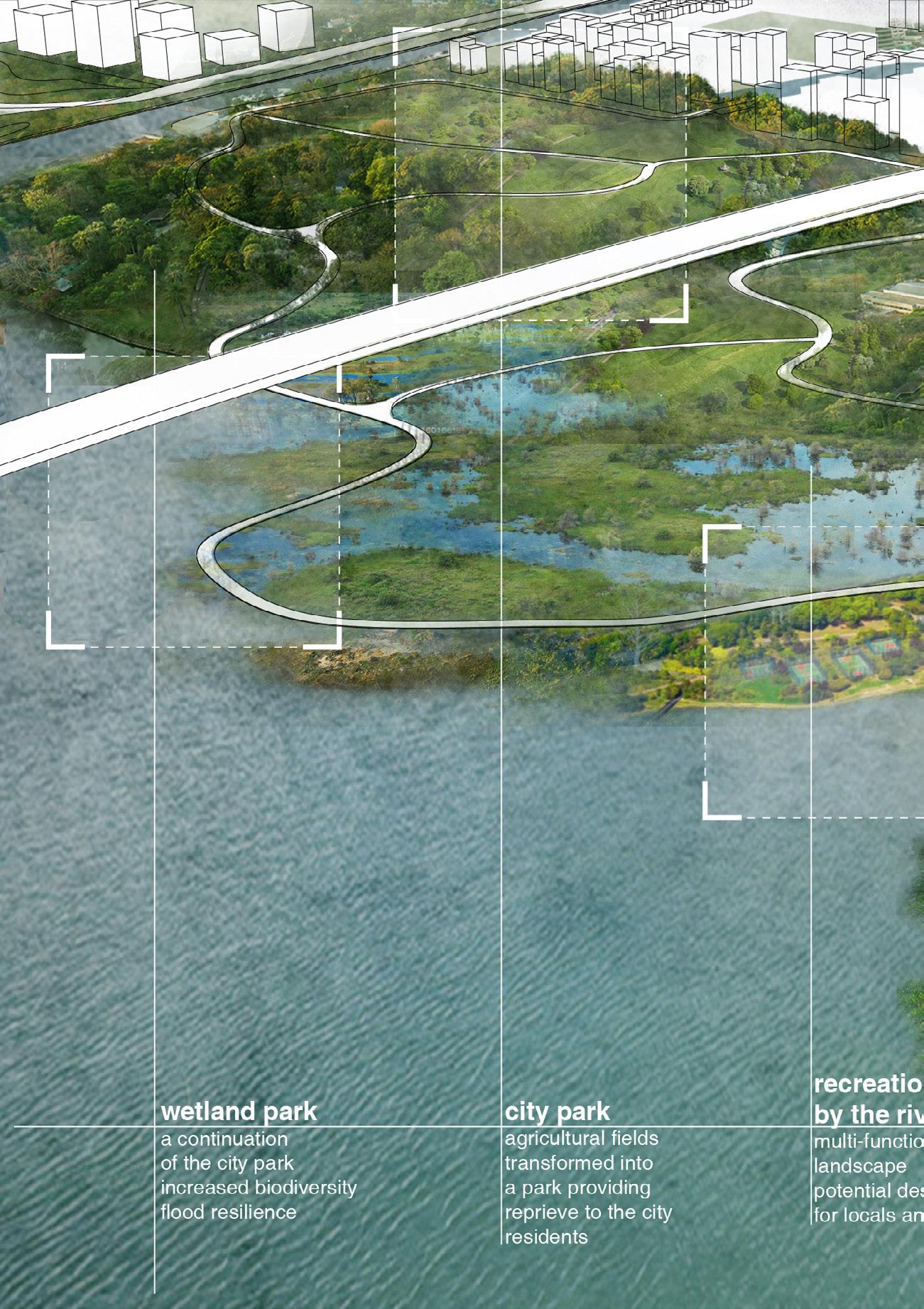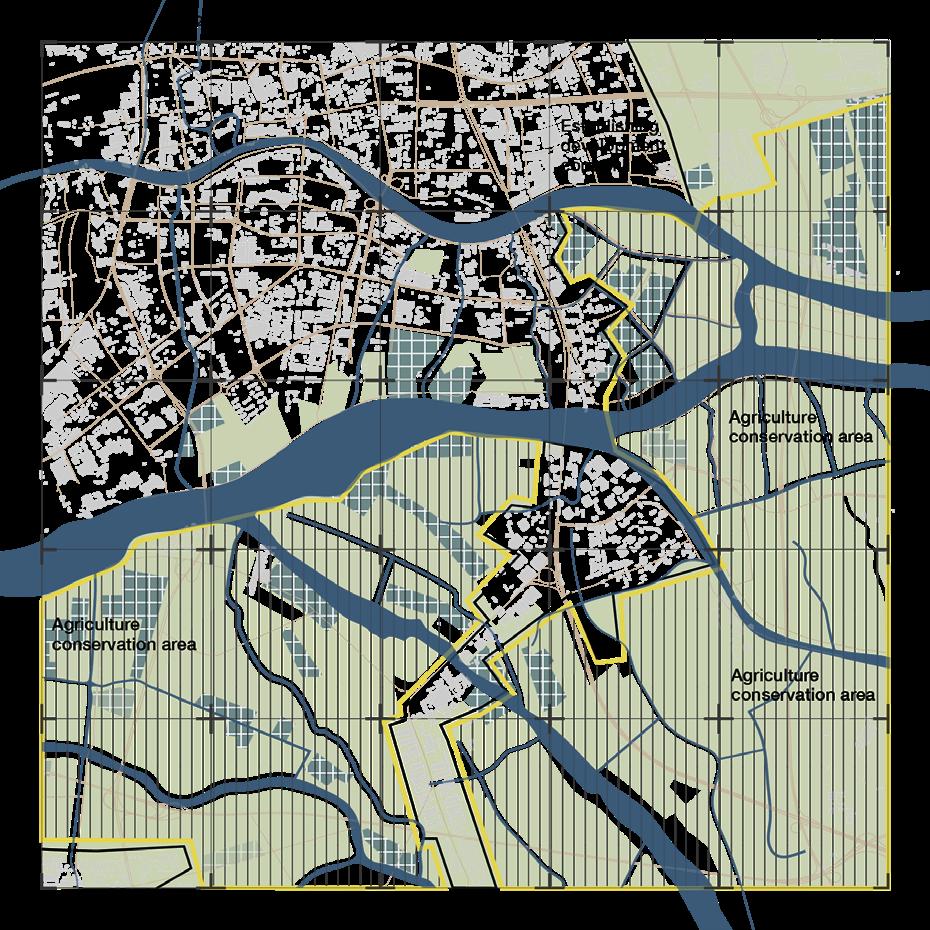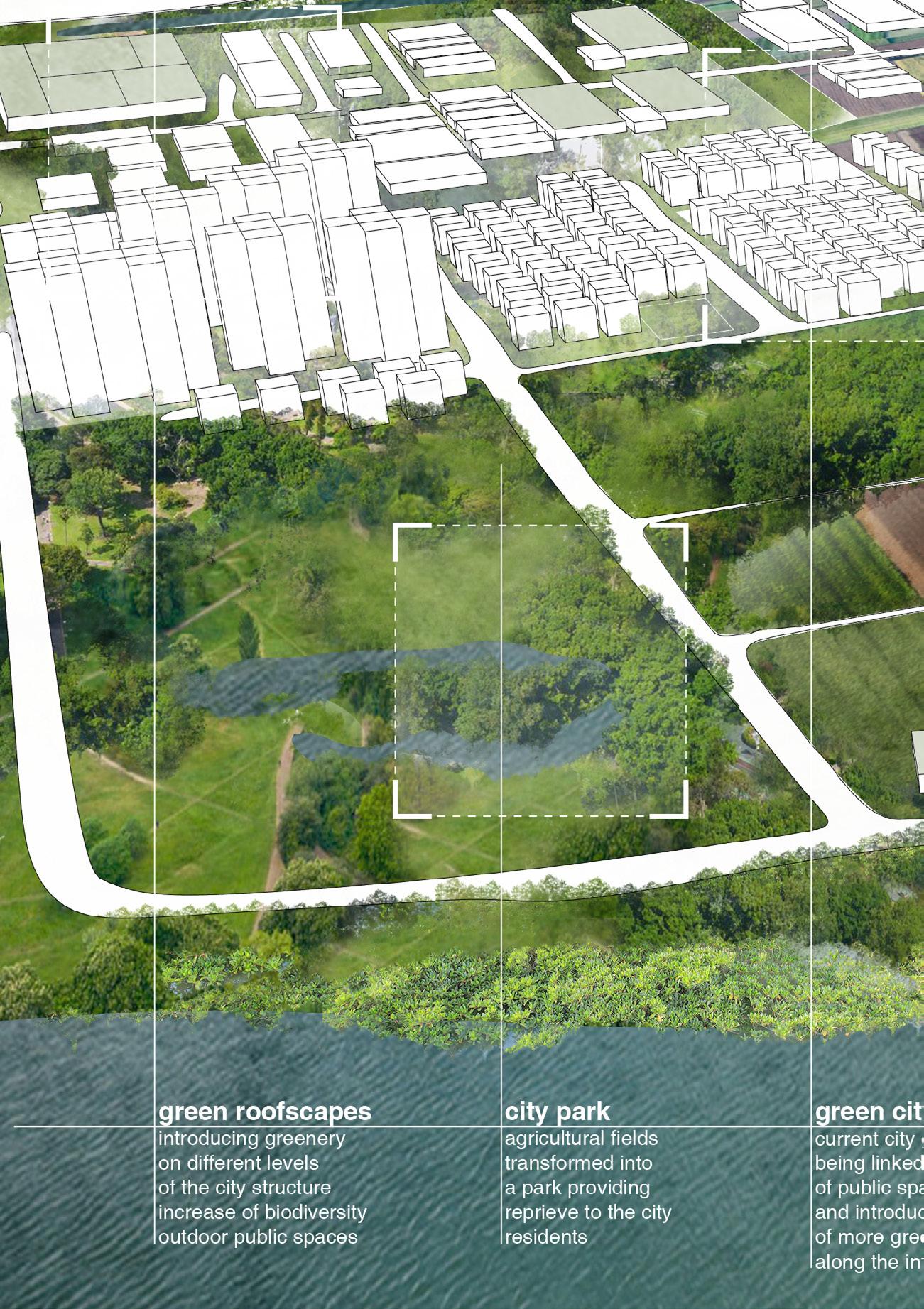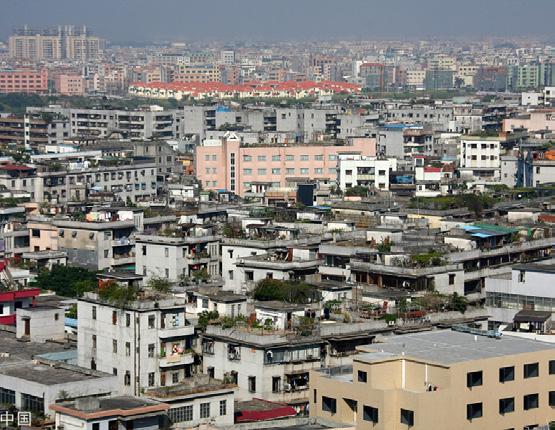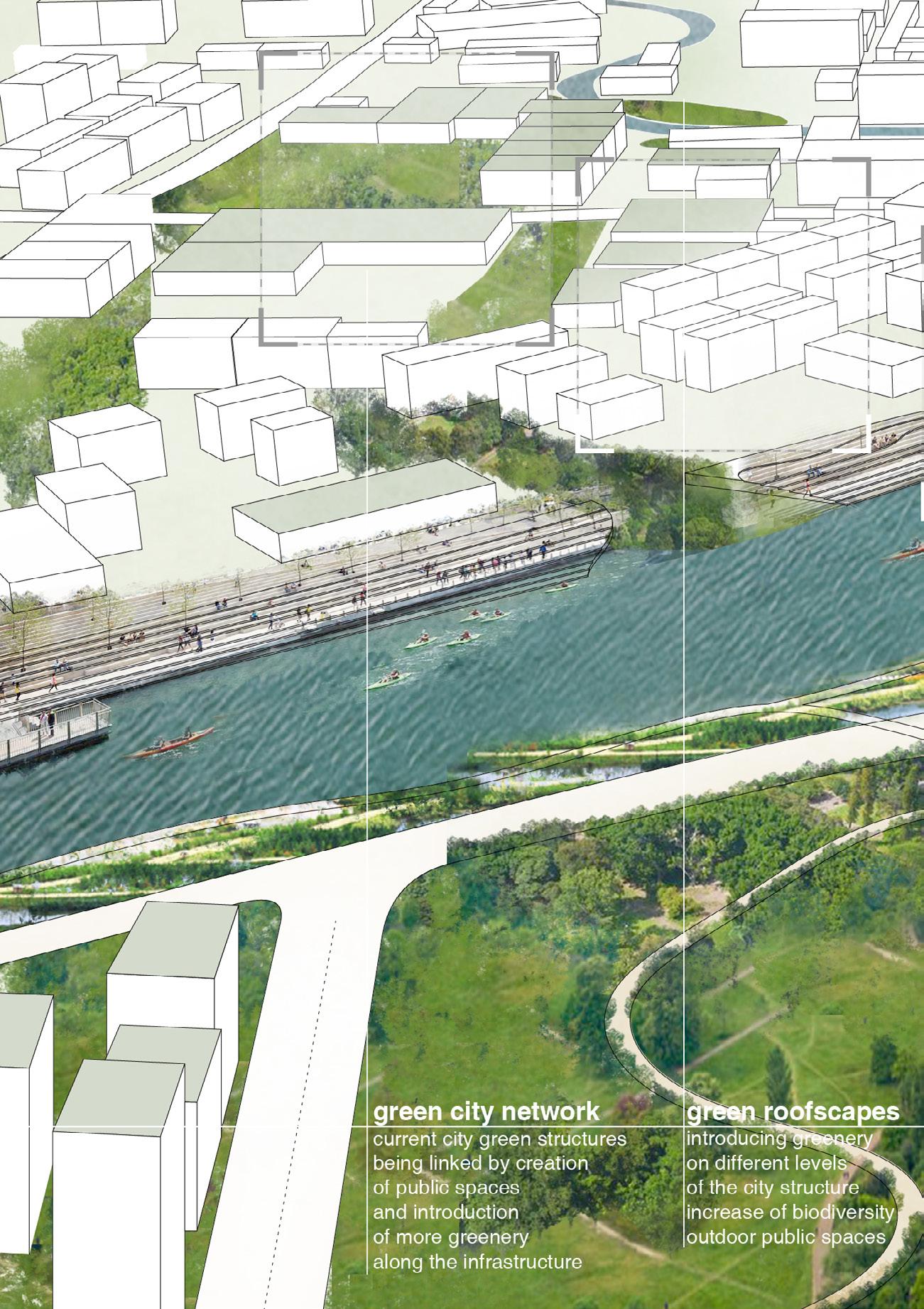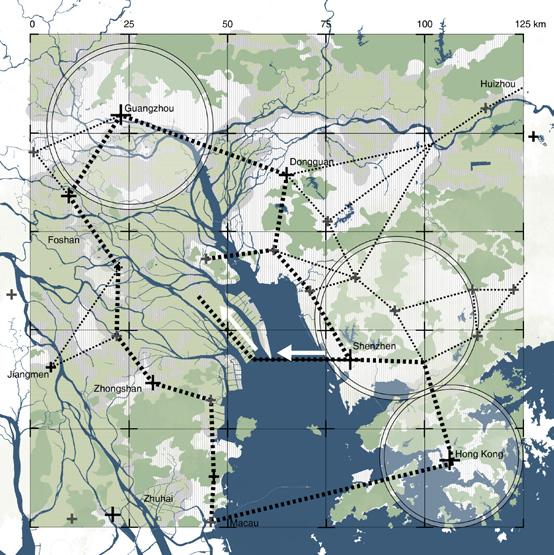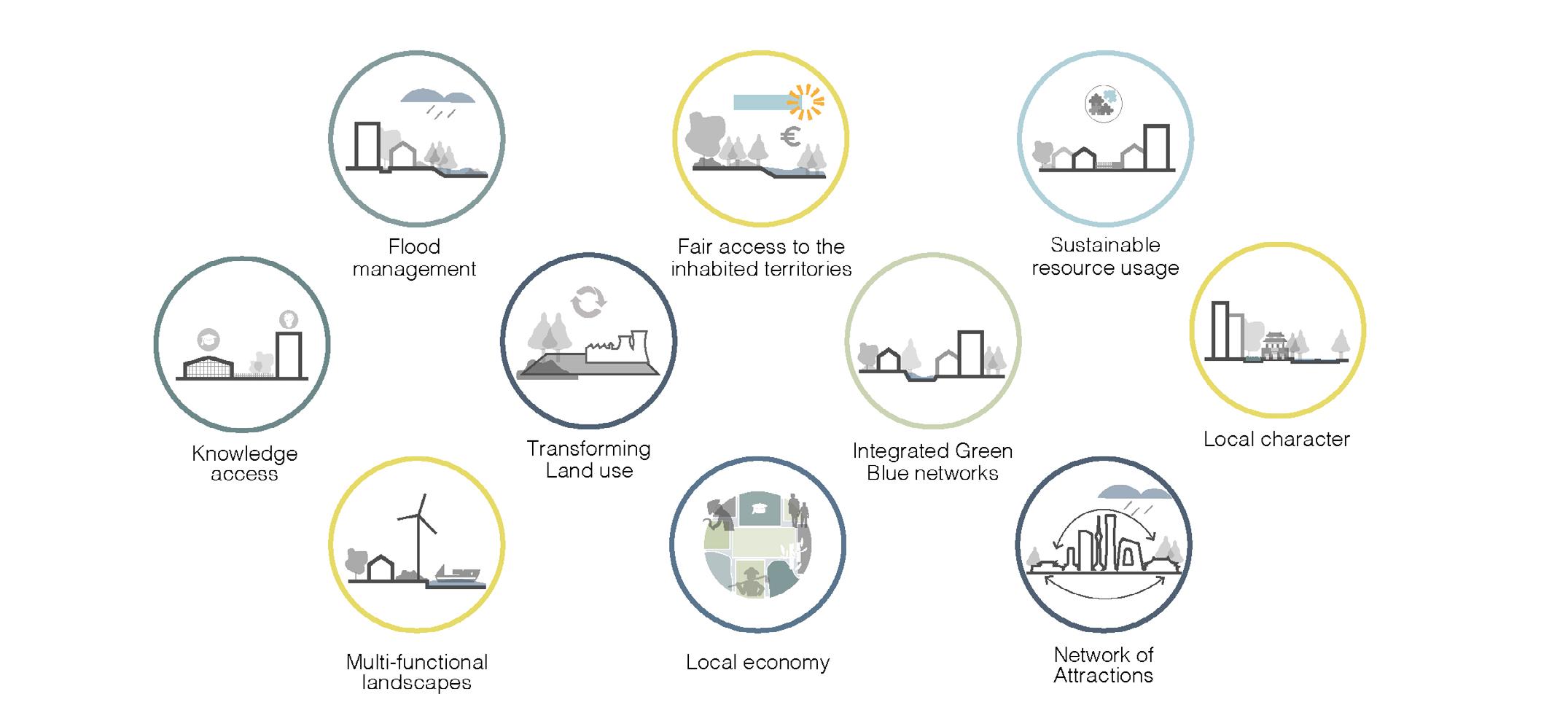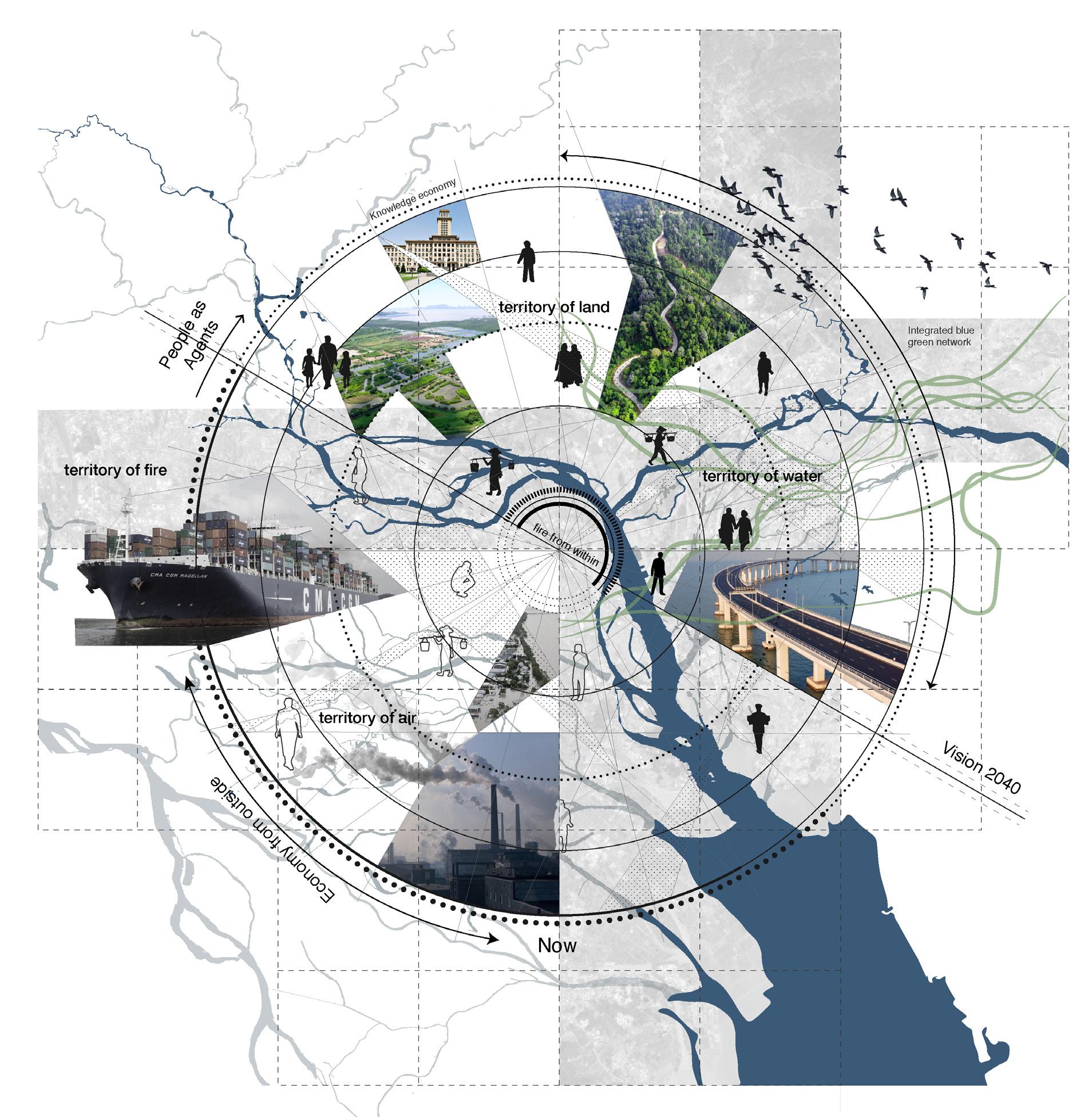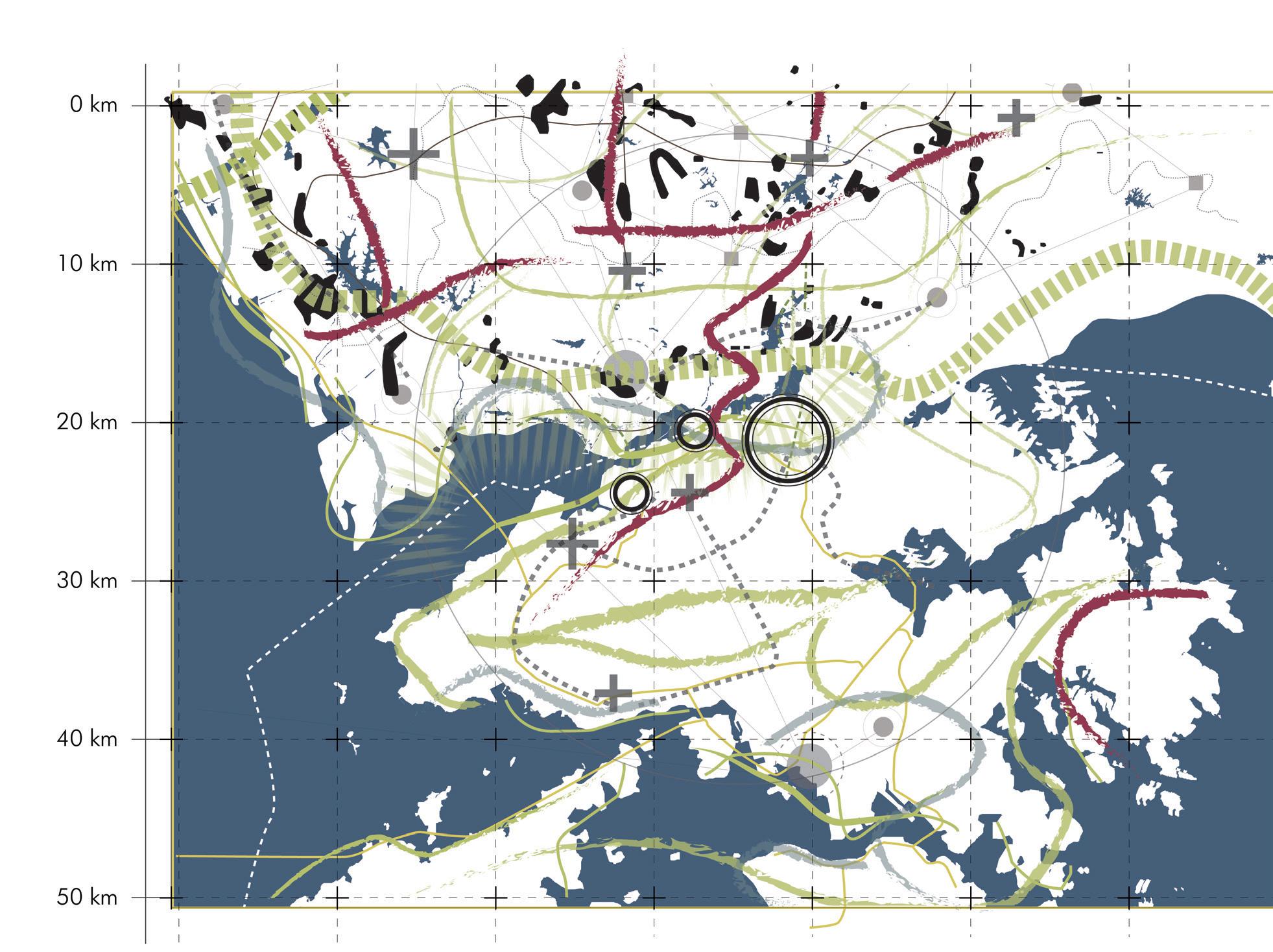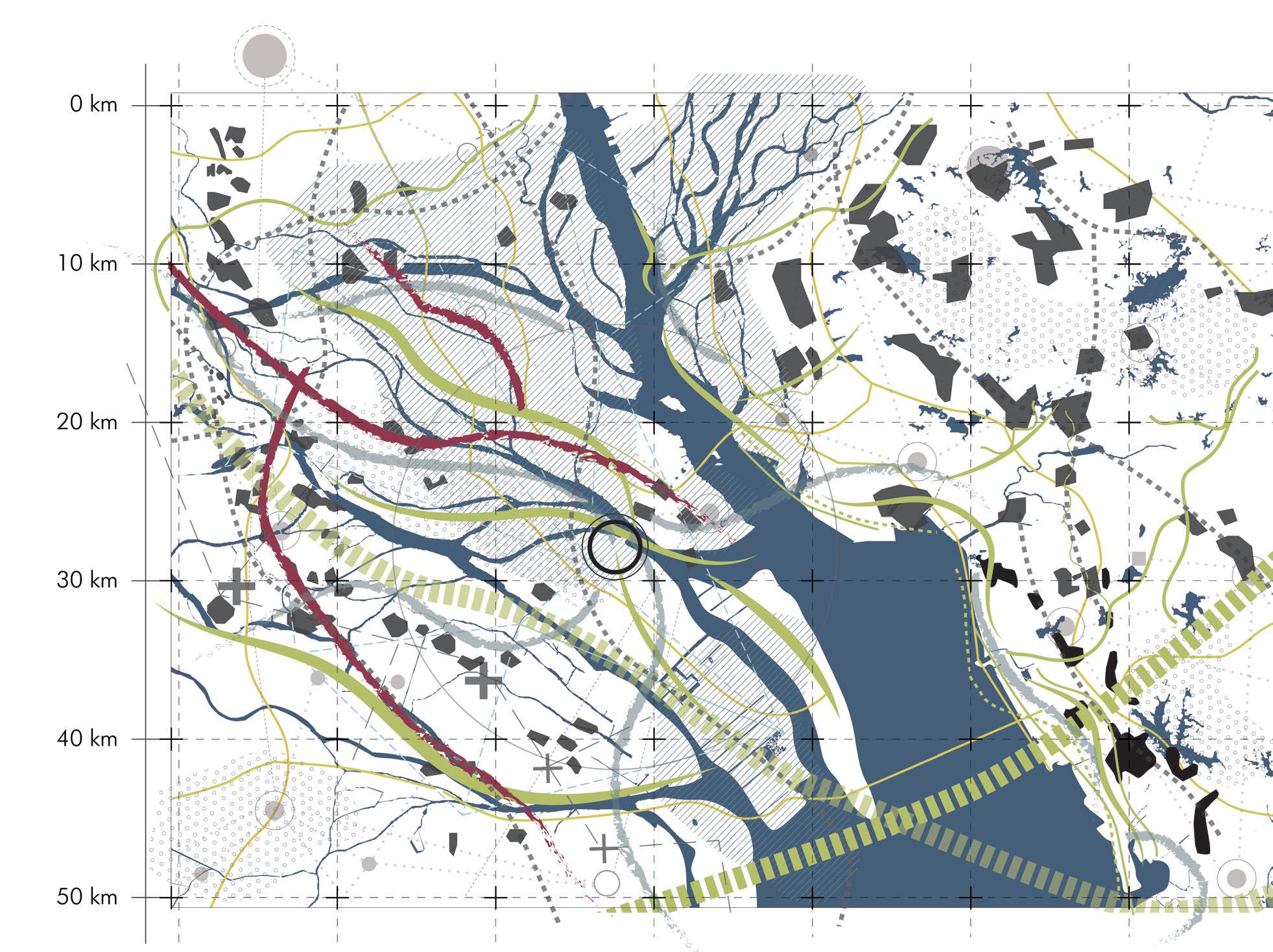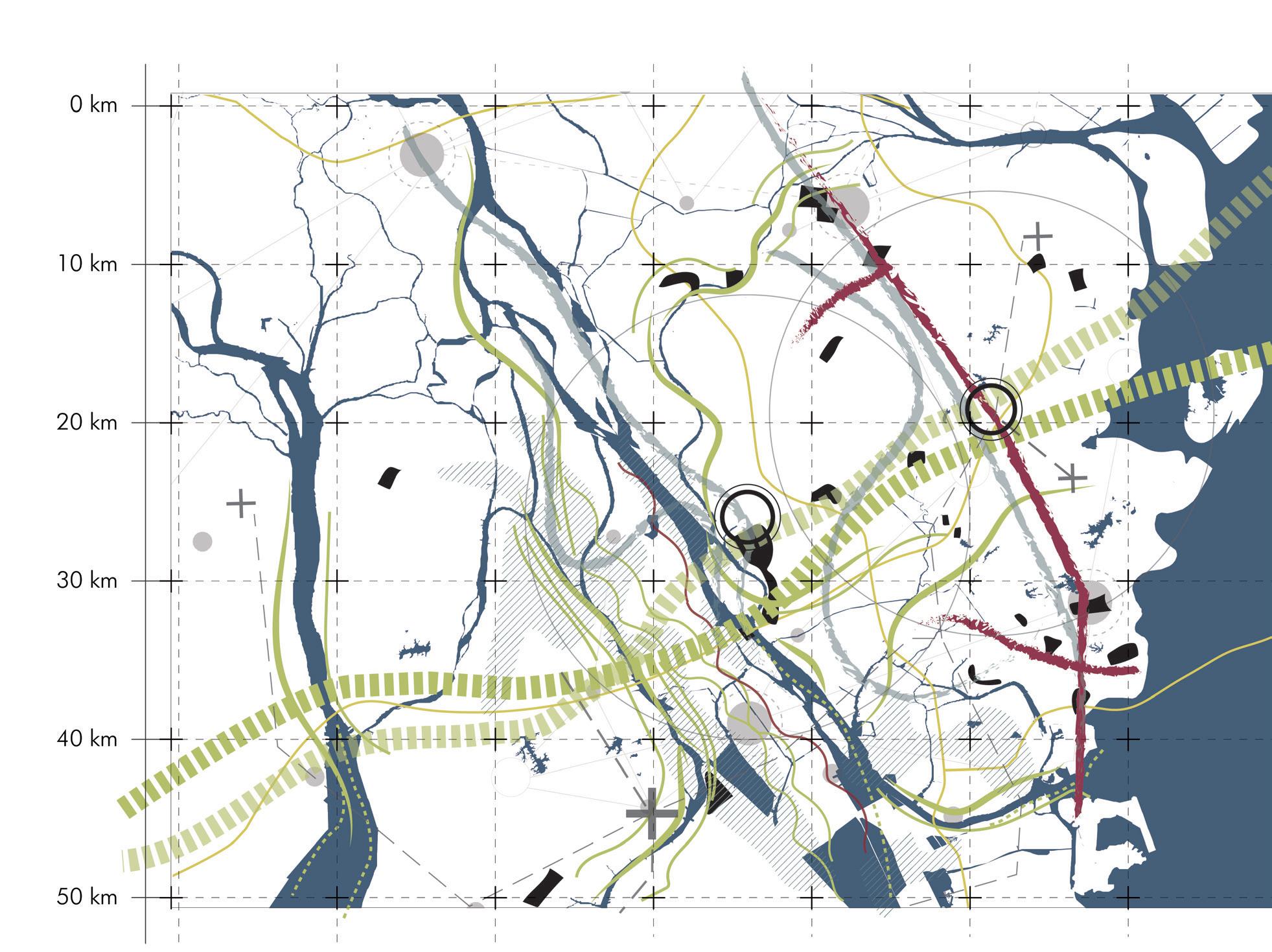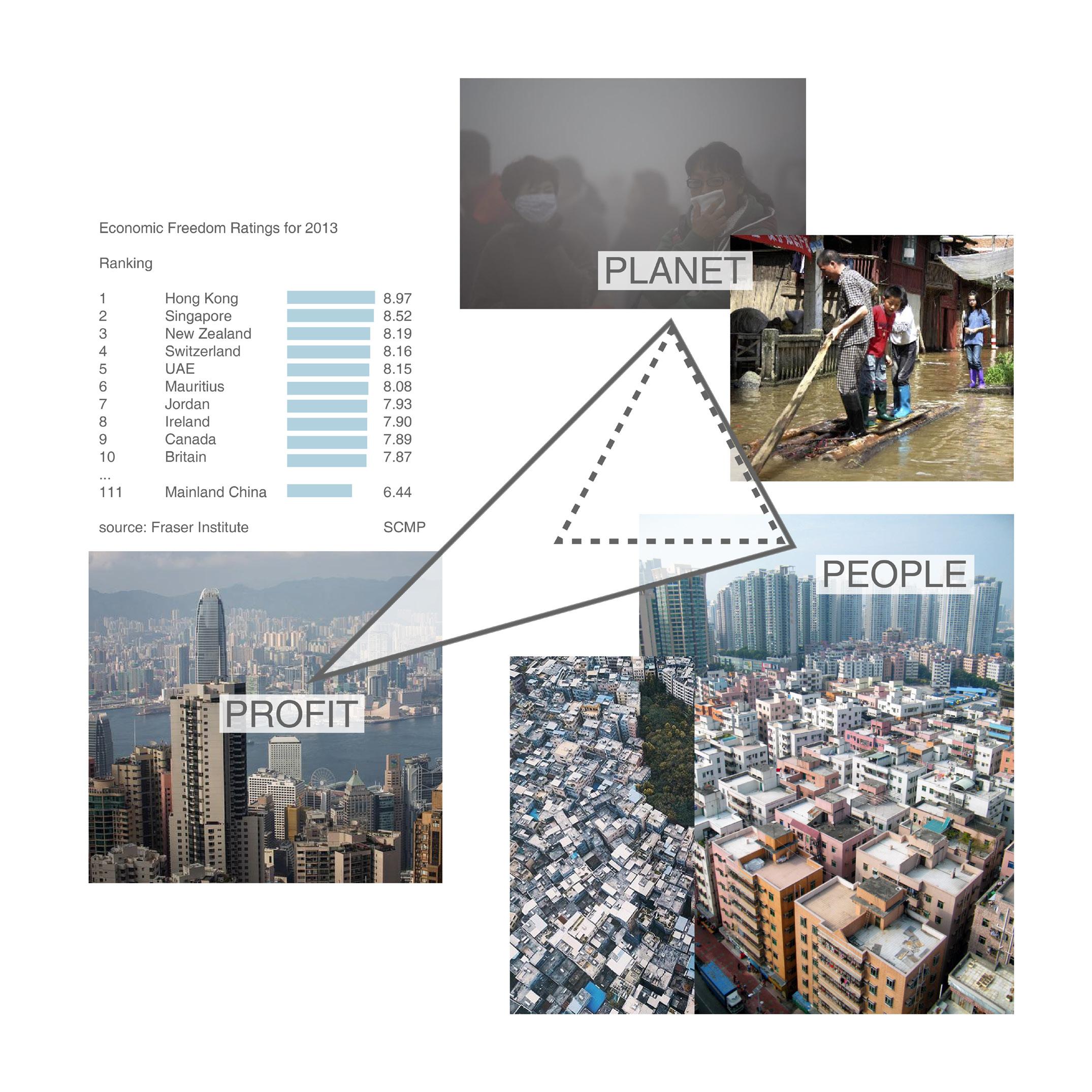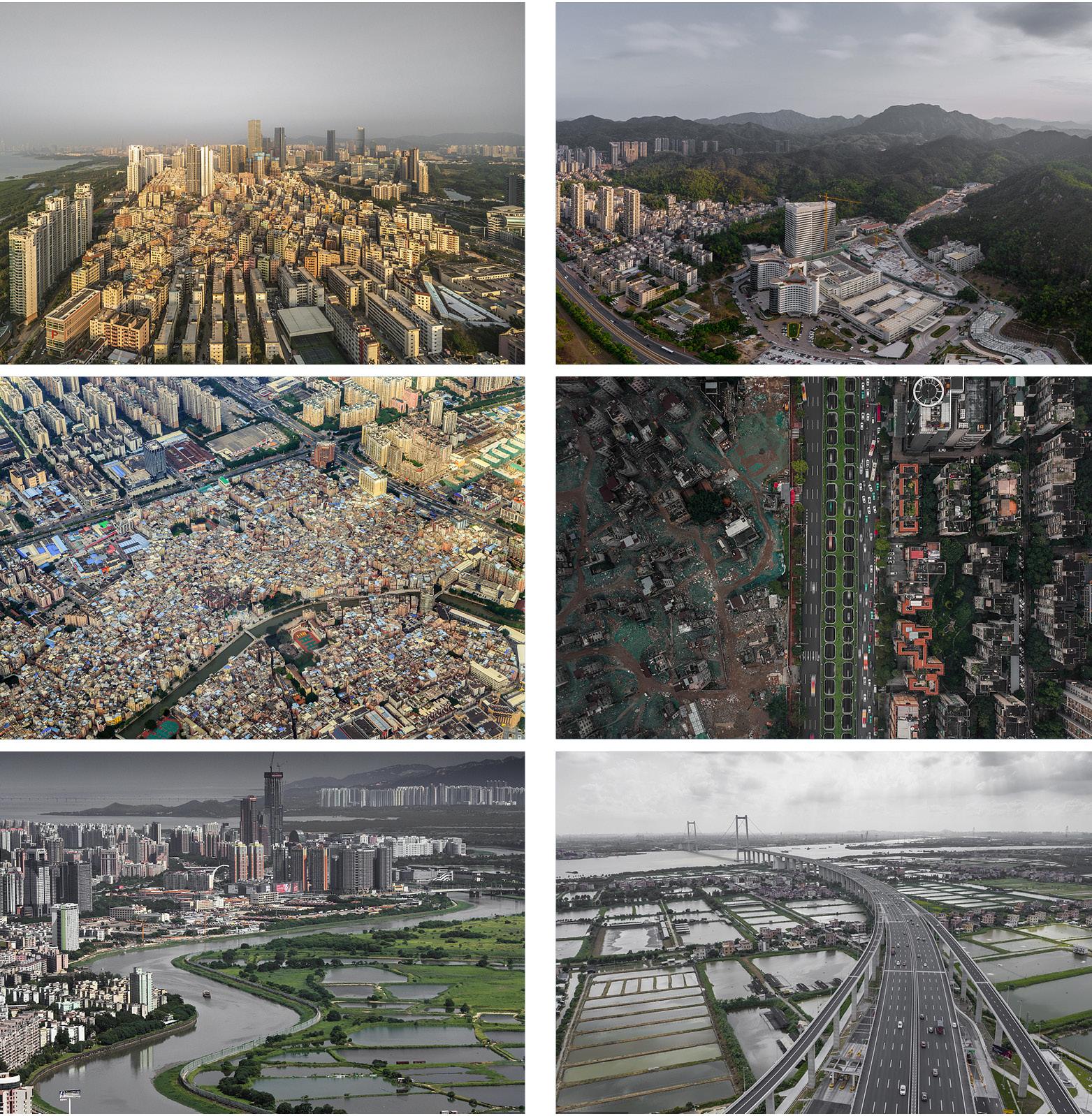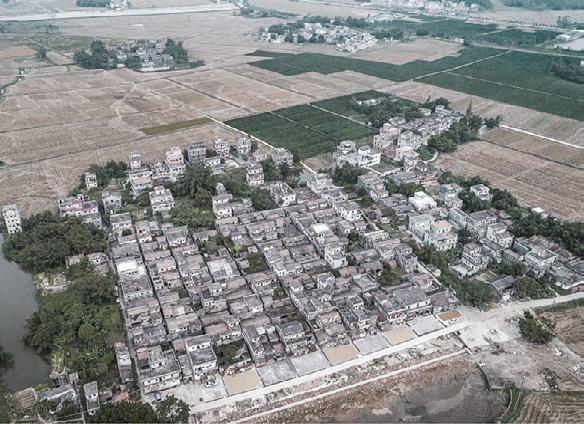Introduction Greater Bay Area as an economy-driven fragile system of territories
The Greater Bay Area is a megalopolis located in the south of China. Also known as the Greater Pearl River Delta, it consists of nine cities and two special administrative regions. With a population of over 71 million, and with a GDP of USD 1,642.5 billion, the Greater Bay Area has the highest recorded rates of urbanization and economic developments in the world. Nested in an intricate yet fragile delta system, the region is very prosperous with myriad landscapes like industrial areas, urban and rural centres, natural reserves and agricultural lands. The territory also has dominant aquaculture like fish ponds which is closely connected to its heritage. However, this close dependency that once existed between the people and the natural systems is lost since the onset of industrialisation. With the open-door policy of 1978 (Xiaobin, 2004), the region underwent a swift economic restructuring, transforming from the agricultural sector to the manufacturing sector.
8
While these transformations led to high levels of employment and growth of urban centres, they have also contributed to high levels of migration, loss of biodiversity like the disappearance of mangrove forests and exposed millions of people to environmental hazards (Zhijia, 2015). The current development model based on efficiency and high profits is detrimental to people and the environment. The inequalities in the region express themselves in stresses, unhealthy lifestyles and unjust claims over natural systems and territories (Lankao, 2011). These contribute to the growing environmental criticalities and social-economic vulnerabilities. The Greater Bay Area is now envisioned as an innovation and technology hub of the future; facilitating economic progress. This development must happen in accordance to the values and principles that pertain to a well-functioning society. It is vital to address
the existing challenges while also building up the evolutionary resilience of the region. As a world leader in the global economy, the region should become an example of how to reverse those negative effects and proceed responsibly in the future. A vision and strategy are developed in the scope of this project to shape this transition. It envisions a drive engine that focuses on building the socio-ecological and socio-economic resilience of the region. Resilient thinking would understand the complexities of human and natural systems and tackle the eccentricities that are unique to the area. The vision aims to develop a value-based developmental model that is mindful of people and their quality of life. The resilient city network model would achieve dynamic equilibrium contributing to a fair and equitable society, mindful usage of resources and overall sustainable development.








